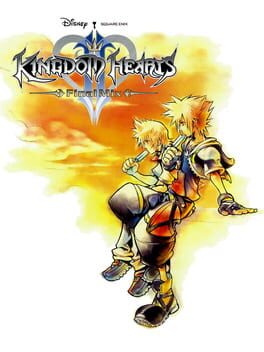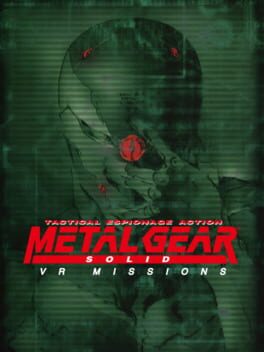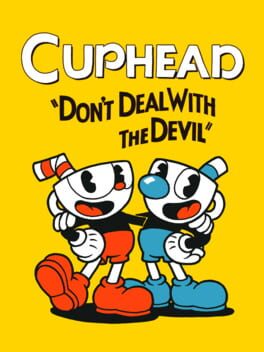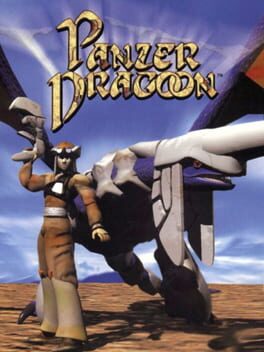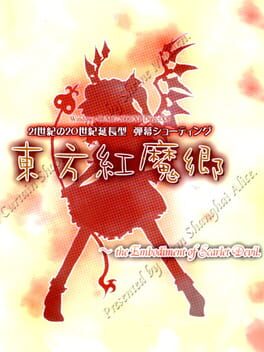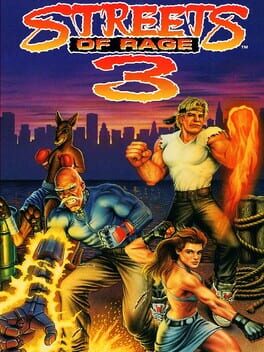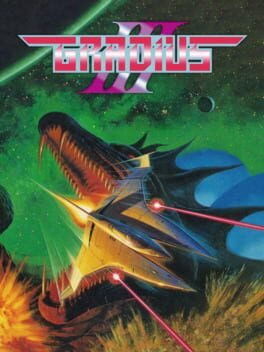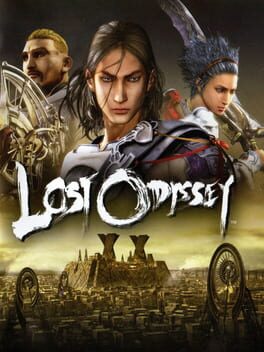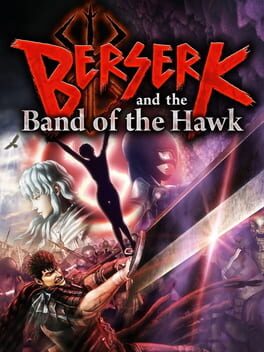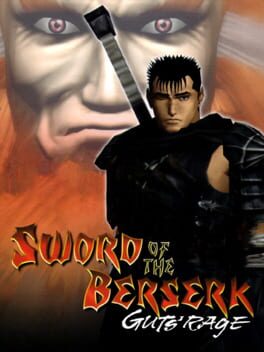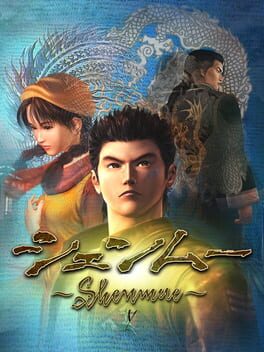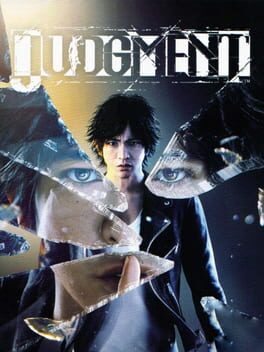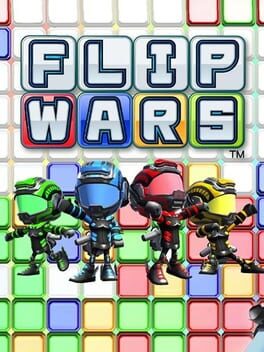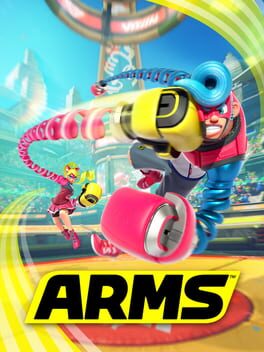Berfison
135 reviews liked by Berfison
Astro's Playroom
2020
Hearing that new video game system you’re about to buy comes with a free title designed to show off its special capabilities likely calls to mind some paltry minigame compilation à la Welcome Park on PS Vita. Sony has actually preloaded their latest home console with a full-fledged 3D collect-a-thon platformer of remarkable quality though! It may not end up being as iconic as Wii Sports, but is a very welcome member of the PS5’s library nonetheless.
It feels like a gleeful celebration of the company’s long history. Not in a supercilious, self-aggrandizing way, but in a manner more akin to sitting down with an old friend and reminiscing fond memories. Everywhere you look there’s an Easter egg or deep cut reference that’s been lovingly placed there to bring a smile to the face of any abiding PlayStation devotee while reminding them of the types of experiences they can’t get anywhere else.
As delightful as all of that is though, it’s the gameplay that matters most and if that didn’t hold up then this package would carry no value. Astro’s Playroom manages to succeed due to spacing out the stages meant to make use of the controller’s unique functions with excellent traditional ones that you can explore and grab things in at your leisure. The levels that see you tilting the DualSense and playing around with its touchpad and adaptive triggers admittedly are a tad gimmicky (especially those dang frog suit sections), but remain fun in spite of that by never outstaying their welcome.
Another aspect that really impressed me was the sheer amount of interactivity. In the starting hub area alone, you can smack all of the little Bots to have them tag along behind you and amass a huge horde of followers. What purpose does this serve? None as far as I can tell! It's just a single example of the many neat little features the devs have included that allow you to find extra amusement in engaging with your surroundings. It's something I wish more games would do.
This might also be the perfect length, striking that nice balance between charming demo you spend a little time with before moving on to the games you actually bought the console for and a more fulfilling offering that can keep you coming back for a few additional hours via the healthy amount of collectibles to hunt down. AP won't be on any top ten of the PS5's lifespan lists when all is said and done, yet is a fantastic freebie regardless that there's absolutely no reason for you to not check out if you own the hardware.
9/10
It feels like a gleeful celebration of the company’s long history. Not in a supercilious, self-aggrandizing way, but in a manner more akin to sitting down with an old friend and reminiscing fond memories. Everywhere you look there’s an Easter egg or deep cut reference that’s been lovingly placed there to bring a smile to the face of any abiding PlayStation devotee while reminding them of the types of experiences they can’t get anywhere else.
As delightful as all of that is though, it’s the gameplay that matters most and if that didn’t hold up then this package would carry no value. Astro’s Playroom manages to succeed due to spacing out the stages meant to make use of the controller’s unique functions with excellent traditional ones that you can explore and grab things in at your leisure. The levels that see you tilting the DualSense and playing around with its touchpad and adaptive triggers admittedly are a tad gimmicky (especially those dang frog suit sections), but remain fun in spite of that by never outstaying their welcome.
Another aspect that really impressed me was the sheer amount of interactivity. In the starting hub area alone, you can smack all of the little Bots to have them tag along behind you and amass a huge horde of followers. What purpose does this serve? None as far as I can tell! It's just a single example of the many neat little features the devs have included that allow you to find extra amusement in engaging with your surroundings. It's something I wish more games would do.
This might also be the perfect length, striking that nice balance between charming demo you spend a little time with before moving on to the games you actually bought the console for and a more fulfilling offering that can keep you coming back for a few additional hours via the healthy amount of collectibles to hunt down. AP won't be on any top ten of the PS5's lifespan lists when all is said and done, yet is a fantastic freebie regardless that there's absolutely no reason for you to not check out if you own the hardware.
9/10
Signalis
2022
i feel like my fellow gay bitches online are all lying to me on this one. big issue: i think its story kind of sucks. Signalis is more interested in ominous poetry, mysteriously censored documents, and spooooky german words than actually setting an atmosphere or crafting a world. the protagonists' romance is supposed to be the beating heart but it read as very bland and hollow, you never get to know much about them and (SPOILERS) they all used to read Word Up magazine anyways. i'm not interested in filling in its blanks because none of it made me feel emotions. this would be fine if it was better to play but Signalis is too easy - its toughest element is its limited inventory, combat is largely avoidable and not too challenging if engaged with. there's not enough friction here, your android girl is a great runner and a great shot. the art direction is very nice, the models and lighting look gorgeous, but there's not enough unique assets in the game. it felt like i was mostly in the same few places fighting the same few enemies the entire time. i do think it succeeds at having some pretty inventive puzzles and i do love the first-person segments, i wish there were more (non-narrarive) setpiece-oriented ones. Signalis had one last thing it could do to hook me, but it loses me here too - none of this game is fucked up! there's never any freaky shit going down, no psychosexual pervert nightmares or nasty stuff or even anything slightly disturbing. i like yuri, i crave that sicko shit!!! Signalis felt like a dystopian teen YA with a bit of sprinkle of Twilight Syndrome and sci-fi militarism, very tame for what was supposed to be a hellish pseudo-reality.
I started this game with a hater's killing intent, Final Fantasy simply does not mean anything to me, and I've tended to a garden of dislike for Disney movies from a young age that has blossomed into a forest of disdain as they evolved from saccharine and condescending children's films to emotional therapy for stunted millennials dragging their disinterested kids to watch their dad cry at a cartoon personification of an emotion wiggling it's eyebrows. I had often heard that a 'critical mode level 1' play through was a legendary action game on par with the greats, and had the full bad faith intention of saying this game sucked actually. Unfortunately my faculties are too objective and like the Casu Martz, just because something is conceptually and aesthetically revolting, doesn't mean it's not worth 100 dollars a pound.
I see you whining about the Master Collection. "Oh, poo. Where's my 4K Snake Eater? Wah wah wah." The real intelligentsia among you have little interest in how modern technology can warp and twist games that were very intentionally built for specific, old hardware with all their limitations. No, we're in it for convenient access to the dregs of the series.
No man alive will ever bother their arse replaying VR Missions on a PS1. If anyone was going to, it would be me, and I very much fucking am fucking not going to do that, thank you very much. But as I played Splatoon 2's Octo Expansion, chased higher ranks in Resident Evil 4's Mercenaries mode and witnessed how much the console's pick-up-and-play nature benefitted my patience for twitchy eShop trash like REKT and Marble It Up, the game has remained in the back of my mind, and the bottom of my Switch port wishlist. Being able to pick up the console and put it to sleep whenever the mood suited me got me through some of the biggest pains in the arse that videogames could throw at me.
Metal Gear Solid: VR Missions, or Metal Gear Solid: Special Missions, or Metal Gear Solid: Integral - Disc 3 (it doesn't matter what you call it, as they're all present as separate, barely distinct ISOs in the Master Collection), is a very annoying game with little modern relevance. It was a little side-project put together in an alarmingly short amount of time by the software specialists at KCEJ, while the ideas guys were busy drawing up plans for MGS2. I've got a lot of respect for the no-name devs who put my favourite game together, and I'm empathetic to the notion that its mechanics could be explored in interesting ways outside the constraints of a story-based campaign. This game is my punishment for that trust.
Metal Gear Solid is mechanically rich. There's all sorts of unique weapons, items and enemy characteristics that don't get much play in a typical run through the campaign. When do you ever find a reason to plant a Claymore? Is that seriously your Vulcan Raven technique? It's often pretty fun to see these things explored with more direct intent. There's some interesting stuff with footstep noise, the cardboard box and infrared motion sensors. Interesting, but not often fun. The missions can often feel like internal tests, or technical showcases, not intended to be consumed by a paying audience. Some are so finicky, that you have to stop on exactly the right pixel before the intended solution plays out. Some require so much crawling that you start looking for tricks to complete the missions that the designers never intended. It doesn't help that so much of the 300 Missions list is padded out with both PRACTICE and TIME ATTACK variants of the same levels. The game is presenting you with horseshit, and having you obediently wade through it.
MGS1's controls and mechanics serve its main campaign well. Outside of that context, you really bump up against their quirks and restrictions. It's not a game that makes great use of analogue control, with movement restricted to eight directions, and no control over speed or momentum. It makes first-person weapons like the Stinger missile launcher and PSG-1 sniper rifle incredibly finicky to control. Shifting your aim is always at a pre-defined speed that you have little influence over, and chasing moving targets or attempting to pinpoint an angle can be infuriating. Again, it works well enough in the main campaign, where its utility is mainly limited to a couple of boss fights with complementary design. In big challenge arenas, with targets shifting behind cover in every direction, they're torture. Alzheimer's patients may want to use this game to help the public understand how debilitating it can be to live with their disease.
There is fun in VR Missions. Some of the more explosive weapons tests can feel quite gratifying after a series of fiddly stealth missions and physics challenges that require you to play them with robotic accuracy. I've perhaps focused on the frustration in the handful of surgically strict missions a little too much, here. The majority of missions are simple and underwhelming. Quite often, I'll finish a late-game level and think "Oh, was that it?" when I'm told I completed it in record time. It's kind of fun to see these tools get used more than the original game ever asked you to. C4 is particularly fun to play around with, strategically placing each explosive and detonating at the precise moment they're lined-up to do the most damage. Not something you'd allow yourself to do too often in MGS1, where alert phases and limited rations are more of a concern, but pocketed off to consequence-free missions, they're a fun tool. Western fans were relieved they wouldn't be asked to buy MGS1 again to experience this content, but I think they make most sense as a bonus disc in an expanded release of the original game. They're kind of a neat bonus for hardcore fans, but have extremely limited appeal outside of that audience. Like the soundtrack CDs or art books. It's merchandise. I'm siding with Substance's approach on this one.
If you make it all the way to 85% completion, you'll unlock the NINJA missions, allowing you to play as Gray Fox, with big jumps and twirling sword manoeuvres. Back in 1999, this was the shit, and understandably a big feature the game advertised prominently, but I don't know if it retains much of its original thrill in a post-Metal Gear Rising world. I think his animations and poses are still really cool, running down corridors brandishing his HF Blade out the bottom of his fist like a killer's dagger, and it's definitely the part of the package I was most nostalgic for, but it's clear the MGS1 engine is buckling under the pressure of trying to present fluid gameplay. I love games with restrictive, predictable movement, but it's best suited for situations where you can get a good view of your environment and make plans before attempting them. With something faster and more fluid, you're constantly running into enemies, missing shots and overshooting jumps. As much as I advocate for a more consistent approach to controls, I think it's clear why Mario 64's style had more influence in fast-paced action games than Tomb Raider did. The final of the 3 NINJA missions is an assassination mission, with you avoiding detection as you seek your target. It's my favourite of the bunch, as you take the time to scout your target and dodge patrolling guards, but it's set in the same room as the other two, and it's twenty seconds long. I'd have loved to have seen more of that kind of thing, but I imagine KCEJ exploded a few PS1 devkits attempting it.
Past that, the final rewards in the game mainly concern the PHOTOGRAPHING mode, where high-poly models of Dr Naomi Hunter and (after a bit of effort on the Sneaking Mode times) Mei Ling, sit in the middle of a VR arena, slowly playing out subtle, bored animations, and you're given the opportunity to dedicate two memory card slots to a highly-compressed photo of whatever you manage to capture within the time limit. This was always weird, and I feel like I'm exorcising long-held trauma by explicitly addressing it. The camera in MGS1 was a bit of a technical achievement, but they didn't give it a real purpose within the campaign, so it became something of an easter egg for those willing to go all the way back to the B-2 armoury after they acquired a LEVEL 6 PAN card. The devs who worked on it likely wanted to give it more of a showcase, which lead to capturing illicit details of Metal Gear RAY in MGS2, but their first answer was to take pictures of a lady, as objectifyingly as possible. They're not posing like supermodels, invested in their own image and making decisions on how to come across well in picture. They act unaware of your presence, and it feels really uncomfortable. There's no purpose to this mode. It exists outside of the main set of missions, and there's no reward for playing them. It's not even titillating, with Naomi and Mei Ling dressed in their office uniforms, just kind of standing there. Their models are fairly impressive for the PS1 though, and you can see the direct lineage from them to the characters in MGS2. Maybe the tech demo angle is the best justification for its inclusion. Maybe some folk really get off on this kind of thing, and it's good they can restrict their activities to a stupid PS1 game. I don't know about you, but I'd much rather play with the Demo One T-Rex.
Mind you, this is the impertinent scrutiny of a 2023 videogame player. Someone who could just as easily access the wizz pop bang thrills of a Grand Theft Auto V or broadband internet we can browse on our telephones. We didn't even have DVD collections to turn to when this came out. We were just sitting in our bedrooms with the promise of a PlayStation 2 future, and a hypothetical continuation of the Metal Gear story. Gnawing away at this diverting chewtoy made sense to devoted MGS fans in 1999. Would I recommend anyone try to get through it today? God no. You've probably got some new emails to read or something. This game was made for people whose wildest dream was 24 hour access to bored.com
No man alive will ever bother their arse replaying VR Missions on a PS1. If anyone was going to, it would be me, and I very much fucking am fucking not going to do that, thank you very much. But as I played Splatoon 2's Octo Expansion, chased higher ranks in Resident Evil 4's Mercenaries mode and witnessed how much the console's pick-up-and-play nature benefitted my patience for twitchy eShop trash like REKT and Marble It Up, the game has remained in the back of my mind, and the bottom of my Switch port wishlist. Being able to pick up the console and put it to sleep whenever the mood suited me got me through some of the biggest pains in the arse that videogames could throw at me.
Metal Gear Solid: VR Missions, or Metal Gear Solid: Special Missions, or Metal Gear Solid: Integral - Disc 3 (it doesn't matter what you call it, as they're all present as separate, barely distinct ISOs in the Master Collection), is a very annoying game with little modern relevance. It was a little side-project put together in an alarmingly short amount of time by the software specialists at KCEJ, while the ideas guys were busy drawing up plans for MGS2. I've got a lot of respect for the no-name devs who put my favourite game together, and I'm empathetic to the notion that its mechanics could be explored in interesting ways outside the constraints of a story-based campaign. This game is my punishment for that trust.
Metal Gear Solid is mechanically rich. There's all sorts of unique weapons, items and enemy characteristics that don't get much play in a typical run through the campaign. When do you ever find a reason to plant a Claymore? Is that seriously your Vulcan Raven technique? It's often pretty fun to see these things explored with more direct intent. There's some interesting stuff with footstep noise, the cardboard box and infrared motion sensors. Interesting, but not often fun. The missions can often feel like internal tests, or technical showcases, not intended to be consumed by a paying audience. Some are so finicky, that you have to stop on exactly the right pixel before the intended solution plays out. Some require so much crawling that you start looking for tricks to complete the missions that the designers never intended. It doesn't help that so much of the 300 Missions list is padded out with both PRACTICE and TIME ATTACK variants of the same levels. The game is presenting you with horseshit, and having you obediently wade through it.
MGS1's controls and mechanics serve its main campaign well. Outside of that context, you really bump up against their quirks and restrictions. It's not a game that makes great use of analogue control, with movement restricted to eight directions, and no control over speed or momentum. It makes first-person weapons like the Stinger missile launcher and PSG-1 sniper rifle incredibly finicky to control. Shifting your aim is always at a pre-defined speed that you have little influence over, and chasing moving targets or attempting to pinpoint an angle can be infuriating. Again, it works well enough in the main campaign, where its utility is mainly limited to a couple of boss fights with complementary design. In big challenge arenas, with targets shifting behind cover in every direction, they're torture. Alzheimer's patients may want to use this game to help the public understand how debilitating it can be to live with their disease.
There is fun in VR Missions. Some of the more explosive weapons tests can feel quite gratifying after a series of fiddly stealth missions and physics challenges that require you to play them with robotic accuracy. I've perhaps focused on the frustration in the handful of surgically strict missions a little too much, here. The majority of missions are simple and underwhelming. Quite often, I'll finish a late-game level and think "Oh, was that it?" when I'm told I completed it in record time. It's kind of fun to see these tools get used more than the original game ever asked you to. C4 is particularly fun to play around with, strategically placing each explosive and detonating at the precise moment they're lined-up to do the most damage. Not something you'd allow yourself to do too often in MGS1, where alert phases and limited rations are more of a concern, but pocketed off to consequence-free missions, they're a fun tool. Western fans were relieved they wouldn't be asked to buy MGS1 again to experience this content, but I think they make most sense as a bonus disc in an expanded release of the original game. They're kind of a neat bonus for hardcore fans, but have extremely limited appeal outside of that audience. Like the soundtrack CDs or art books. It's merchandise. I'm siding with Substance's approach on this one.
If you make it all the way to 85% completion, you'll unlock the NINJA missions, allowing you to play as Gray Fox, with big jumps and twirling sword manoeuvres. Back in 1999, this was the shit, and understandably a big feature the game advertised prominently, but I don't know if it retains much of its original thrill in a post-Metal Gear Rising world. I think his animations and poses are still really cool, running down corridors brandishing his HF Blade out the bottom of his fist like a killer's dagger, and it's definitely the part of the package I was most nostalgic for, but it's clear the MGS1 engine is buckling under the pressure of trying to present fluid gameplay. I love games with restrictive, predictable movement, but it's best suited for situations where you can get a good view of your environment and make plans before attempting them. With something faster and more fluid, you're constantly running into enemies, missing shots and overshooting jumps. As much as I advocate for a more consistent approach to controls, I think it's clear why Mario 64's style had more influence in fast-paced action games than Tomb Raider did. The final of the 3 NINJA missions is an assassination mission, with you avoiding detection as you seek your target. It's my favourite of the bunch, as you take the time to scout your target and dodge patrolling guards, but it's set in the same room as the other two, and it's twenty seconds long. I'd have loved to have seen more of that kind of thing, but I imagine KCEJ exploded a few PS1 devkits attempting it.
Past that, the final rewards in the game mainly concern the PHOTOGRAPHING mode, where high-poly models of Dr Naomi Hunter and (after a bit of effort on the Sneaking Mode times) Mei Ling, sit in the middle of a VR arena, slowly playing out subtle, bored animations, and you're given the opportunity to dedicate two memory card slots to a highly-compressed photo of whatever you manage to capture within the time limit. This was always weird, and I feel like I'm exorcising long-held trauma by explicitly addressing it. The camera in MGS1 was a bit of a technical achievement, but they didn't give it a real purpose within the campaign, so it became something of an easter egg for those willing to go all the way back to the B-2 armoury after they acquired a LEVEL 6 PAN card. The devs who worked on it likely wanted to give it more of a showcase, which lead to capturing illicit details of Metal Gear RAY in MGS2, but their first answer was to take pictures of a lady, as objectifyingly as possible. They're not posing like supermodels, invested in their own image and making decisions on how to come across well in picture. They act unaware of your presence, and it feels really uncomfortable. There's no purpose to this mode. It exists outside of the main set of missions, and there's no reward for playing them. It's not even titillating, with Naomi and Mei Ling dressed in their office uniforms, just kind of standing there. Their models are fairly impressive for the PS1 though, and you can see the direct lineage from them to the characters in MGS2. Maybe the tech demo angle is the best justification for its inclusion. Maybe some folk really get off on this kind of thing, and it's good they can restrict their activities to a stupid PS1 game. I don't know about you, but I'd much rather play with the Demo One T-Rex.
Mind you, this is the impertinent scrutiny of a 2023 videogame player. Someone who could just as easily access the wizz pop bang thrills of a Grand Theft Auto V or broadband internet we can browse on our telephones. We didn't even have DVD collections to turn to when this came out. We were just sitting in our bedrooms with the promise of a PlayStation 2 future, and a hypothetical continuation of the Metal Gear story. Gnawing away at this diverting chewtoy made sense to devoted MGS fans in 1999. Would I recommend anyone try to get through it today? God no. You've probably got some new emails to read or something. This game was made for people whose wildest dream was 24 hour access to bored.com
Running with Scissors tries its hand at a linear campaign. I suppose I shouldn't be too surprised to see a cheap DLC add-on take a more focused, directed approach like this, but all it really does is highlight how Postal 2's combat and level-design wasn't made for or suit that kind of structure. With the open-world having been completely stripped away you're funneled into a string of segments that either have you blasting your way through corridor-shooter levels or killing X number of something (usually animals or zombies) before being able to move on. While the former is definitely more entertaining than the latter, neither are particularly fun or exciting. When the content isn't outright dull it's frustrating instead, shining a big ol' spotlight on the inconsistencies in weapon damage and enemy power. Why is it I can take out the little demon Gary Colemans faster by throwing scissors at them than using an automatic machine gun?
This change in format also forces RWS to engage in a larger amount of scripted storytelling, set pieces, and concocting of their own jokes. Most of my chuckles in the main offering came from however I chose to amuse myself with the tools I had at my disposal. Without the same range of freedom and flexibility at your fingertips here though, they're left trying to mine laughter from the stuff going down in the cutscenes, and let me tell you none of it is terribly funny. A lot of the material is recycled gags (Haha, terrorists and protestors! Satire! LOL!) and gratuitous profanity usage, so I guess I'm expected to be rolling on the floor over how much more absurd and over-the-top everything is now. This expansion marks the point where the franchise first made a heavy push into the hyper-ridiculous territory that would more or less define the property moving forward. I may not be guffawing, but we do get a few noteworthy qualities out of it. Primarily the Dude's hallucination sequences where his prior head trauma causes him to slip into a nightmarish version of reality, which I think might be the devs poking fun at Silent Hill. Whatever the case, it shows the studio has the potential to create a strong horror title visually should they ever decide to step back from the Postal brand for a second.
It's a shame this isn't better, because it's actually a big part of the property's history and lore, making it kind of essential to get the full picture. Apocalypse Weekend played a huge role in shaping the tone of the series and is also the source of that "pigeon mission" meme the fanbase constantly references (for some reason). Unfortunately, it feels about the same as your average crappy, low-budget 2000s era indie FPS. The particular weak points being an overly long and difficult escape from a U.S. military prison/nuclear silo that requires quite a bit of save scumming and one of the most dreadfully loathsome final bosses I've ever faced. I also experienced multiple crashes to desktop, which never happened to me during my playthrough of the base game. Oh well, at least when I exit to the main menu there's a sexy chick in a thong there now. So that's nice.
4/10
This change in format also forces RWS to engage in a larger amount of scripted storytelling, set pieces, and concocting of their own jokes. Most of my chuckles in the main offering came from however I chose to amuse myself with the tools I had at my disposal. Without the same range of freedom and flexibility at your fingertips here though, they're left trying to mine laughter from the stuff going down in the cutscenes, and let me tell you none of it is terribly funny. A lot of the material is recycled gags (Haha, terrorists and protestors! Satire! LOL!) and gratuitous profanity usage, so I guess I'm expected to be rolling on the floor over how much more absurd and over-the-top everything is now. This expansion marks the point where the franchise first made a heavy push into the hyper-ridiculous territory that would more or less define the property moving forward. I may not be guffawing, but we do get a few noteworthy qualities out of it. Primarily the Dude's hallucination sequences where his prior head trauma causes him to slip into a nightmarish version of reality, which I think might be the devs poking fun at Silent Hill. Whatever the case, it shows the studio has the potential to create a strong horror title visually should they ever decide to step back from the Postal brand for a second.
It's a shame this isn't better, because it's actually a big part of the property's history and lore, making it kind of essential to get the full picture. Apocalypse Weekend played a huge role in shaping the tone of the series and is also the source of that "pigeon mission" meme the fanbase constantly references (for some reason). Unfortunately, it feels about the same as your average crappy, low-budget 2000s era indie FPS. The particular weak points being an overly long and difficult escape from a U.S. military prison/nuclear silo that requires quite a bit of save scumming and one of the most dreadfully loathsome final bosses I've ever faced. I also experienced multiple crashes to desktop, which never happened to me during my playthrough of the base game. Oh well, at least when I exit to the main menu there's a sexy chick in a thong there now. So that's nice.
4/10
You go into a dungeon. You spend 30 minutes solving one of the crappiest puzzles in video game history. You are constantly attacked by monsters that are either easy as pie or can wipe you out completely in one go, depending on your luck. After what feels like an eternity, you have finally solved the puzzles on all 3 levels of the dungeon. Before you descend back into the dungeon, you go out again to save, as there could be a boss. You save, return to the dungeon and all the puzzles have been completely reset. So you get to start all over again...FUCK THIS GAME!!! Ok, I calmed down and actually played through the game :D I have to admit that I had a good time with Dragon Quest V after all. I especially liked the cross-generational story. There's just something magical about seeing the world and the characters you've met evolve over the course of the story. I had read a lot of positive things about the story beforehand. It was often emphasized here that there were some twists and turns that you could never have foreseen. I have to strongly disagree with that. The story follows a fairly classic fantasy pattern, has a few little surprises up its sleeve, but never becomes profound or particularly twisty :D Nevertheless, I found it charming, just like the characters, their conflicts and personalities. The antagonist of the game is also often praised, I find him ok at best. Yes, Nimzo and his subjects do some misdeeds in the course of the game, but I didn't really understand why they are soooo dangerous and evil for the world. Actually, they don't do much the whole game :D I found the gameplay nice but also very monotonous. The game is from 1992 and you can really feel it here. I find it annoying that I never know in which order it's someone's turn. It's also annoying that enemies can simply call in more support and the battles can drag on forever. The random encounter rate is also really high. All in all, I thought it was nice but unfortunately I wasn't really carried away by it.
Pokéwalker
2009
I remember I was sitting at the family computer in the kitchen. It was this big old thing and it sat in an an armoire type thing with a pull out desk for the keyboard. The kind of computer with the two of those thin cloth covered speakers with the hole that you liked to put your fingers in. I didn't know it at the time, but in a year or so I'd be in that same spot, looking at the Unova dex for the first time, leaked early from Japan on a website called "Psypokes". And only a few months previously, I was sitting in that same spot, up earlier than the rest of my family, eating cold pizza and watching George Lopez while picking at an irritated, impacted toenail.
But in this moment in time, I was playing Poptropica. Me and my blue skinned, green-haired avatar (who also wore those big, chunky gamer dude goggles) were exploring the aqueducts on Mythology island. I was fixated on the way the Sphinx would turn her head as I moved.
And then, from down the hall and to the left, my mom called out to me.
"You sent your Pokewalker through the wash!"
The Sphinx watched as my aqueducts engaged. I rushed to my mom so I could cradle it in my hands and mash its waterlogged buttons in a desperate cry for God to forgive me for only praying when I felt sick and help me here, one last time. But he ignored me. And Scizor was gone.
But in this moment in time, I was playing Poptropica. Me and my blue skinned, green-haired avatar (who also wore those big, chunky gamer dude goggles) were exploring the aqueducts on Mythology island. I was fixated on the way the Sphinx would turn her head as I moved.
And then, from down the hall and to the left, my mom called out to me.
"You sent your Pokewalker through the wash!"
The Sphinx watched as my aqueducts engaged. I rushed to my mom so I could cradle it in my hands and mash its waterlogged buttons in a desperate cry for God to forgive me for only praying when I felt sick and help me here, one last time. But he ignored me. And Scizor was gone.
Signalis
2022
This game deserves proper critique as much as it deserves its praise.
Gameplay is poorly designed. Ammo, inventory space, level design and respawning enemies are all SUFFOCATING. These elements don't work well together and just frustrate you.
Signalis just poorly replicates old mechanics, while forgetting why these elements worked in the first place. Most ps1 RE games had 8-slots inventory while Signalis tightens it to 6, but also constantly drops at you quest items(Like Silent Hill did) that are far more common than in RE. Because of that backtracking reaches insane levels of tedium. Add to that tight corridors filled with enemies that will respawn later on and it becomes even worse. I had far more fun with majority of psx survival horrors despite them being 20 years older than Signalis.
But despite all of that you can swallow it up and gameplay, while annoying, still will be... serviceable. After all, game tries to be story focused. But story isn't that good either.
Remember principle of "Show, not tell" technique? Well, Signalis OVERuses and UNDERuses it at the same time. Let me explain, there's two primary sources of storytelling in Signalis:
1. Vivid dreamy incomprehensible cutscenes with hundred hidden meanings
2. Ten thousand notes and journals that just infodump on you everything with no context.
Remember Silent "two hour videoessay" Hill 2? People keep analyzing it decades after, I know comparing Signalis to THE Silent Hill 2 is unfair, but the story is simple and perfectly comprehensible without German/Chinese knowledge and reading King in Yellow. Silent Hill KNOWS when to be subtle and when to be blatant. Good luck with understanding Signalis though, because game just tells you to screw yourself and figure everything out by yourself.
Story itself isn't bad, but the game is AFRAID to tell you anything. It comes off as pretentious 2deep4u Evangelion wannabe, instead of presenting cohesive storytelling. It's just blueballing you with introducing a lot of cool stuff like replikas' past lives or cosmic horror, but doesn't provide any fricking answer, all is left is fans' theories. Hell, you won't even know why you ended up at Sierpinski in the first place!!!
The game has positive sides, like outstanding art direction or unique lore, but people just straight up ignore fundamental problems that prevent it from being "instant classic" or "greatest silent hill game since silent hill 3". But ig because lesbian representation is so rare, people treat it like angel simply because it has WLW story(Which is thankfully executed really damn well, but introduced WAY TOO LATE).
I really wanted to love this game. Sadly, I couldn't.
Gameplay is poorly designed. Ammo, inventory space, level design and respawning enemies are all SUFFOCATING. These elements don't work well together and just frustrate you.
Signalis just poorly replicates old mechanics, while forgetting why these elements worked in the first place. Most ps1 RE games had 8-slots inventory while Signalis tightens it to 6, but also constantly drops at you quest items(Like Silent Hill did) that are far more common than in RE. Because of that backtracking reaches insane levels of tedium. Add to that tight corridors filled with enemies that will respawn later on and it becomes even worse. I had far more fun with majority of psx survival horrors despite them being 20 years older than Signalis.
But despite all of that you can swallow it up and gameplay, while annoying, still will be... serviceable. After all, game tries to be story focused. But story isn't that good either.
Remember principle of "Show, not tell" technique? Well, Signalis OVERuses and UNDERuses it at the same time. Let me explain, there's two primary sources of storytelling in Signalis:
1. Vivid dreamy incomprehensible cutscenes with hundred hidden meanings
2. Ten thousand notes and journals that just infodump on you everything with no context.
Remember Silent "two hour videoessay" Hill 2? People keep analyzing it decades after, I know comparing Signalis to THE Silent Hill 2 is unfair, but the story is simple and perfectly comprehensible without German/Chinese knowledge and reading King in Yellow. Silent Hill KNOWS when to be subtle and when to be blatant. Good luck with understanding Signalis though, because game just tells you to screw yourself and figure everything out by yourself.
Story itself isn't bad, but the game is AFRAID to tell you anything. It comes off as pretentious 2deep4u Evangelion wannabe, instead of presenting cohesive storytelling. It's just blueballing you with introducing a lot of cool stuff like replikas' past lives or cosmic horror, but doesn't provide any fricking answer, all is left is fans' theories. Hell, you won't even know why you ended up at Sierpinski in the first place!!!
The game has positive sides, like outstanding art direction or unique lore, but people just straight up ignore fundamental problems that prevent it from being "instant classic" or "greatest silent hill game since silent hill 3". But ig because lesbian representation is so rare, people treat it like angel simply because it has WLW story(Which is thankfully executed really damn well, but introduced WAY TOO LATE).
I really wanted to love this game. Sadly, I couldn't.


